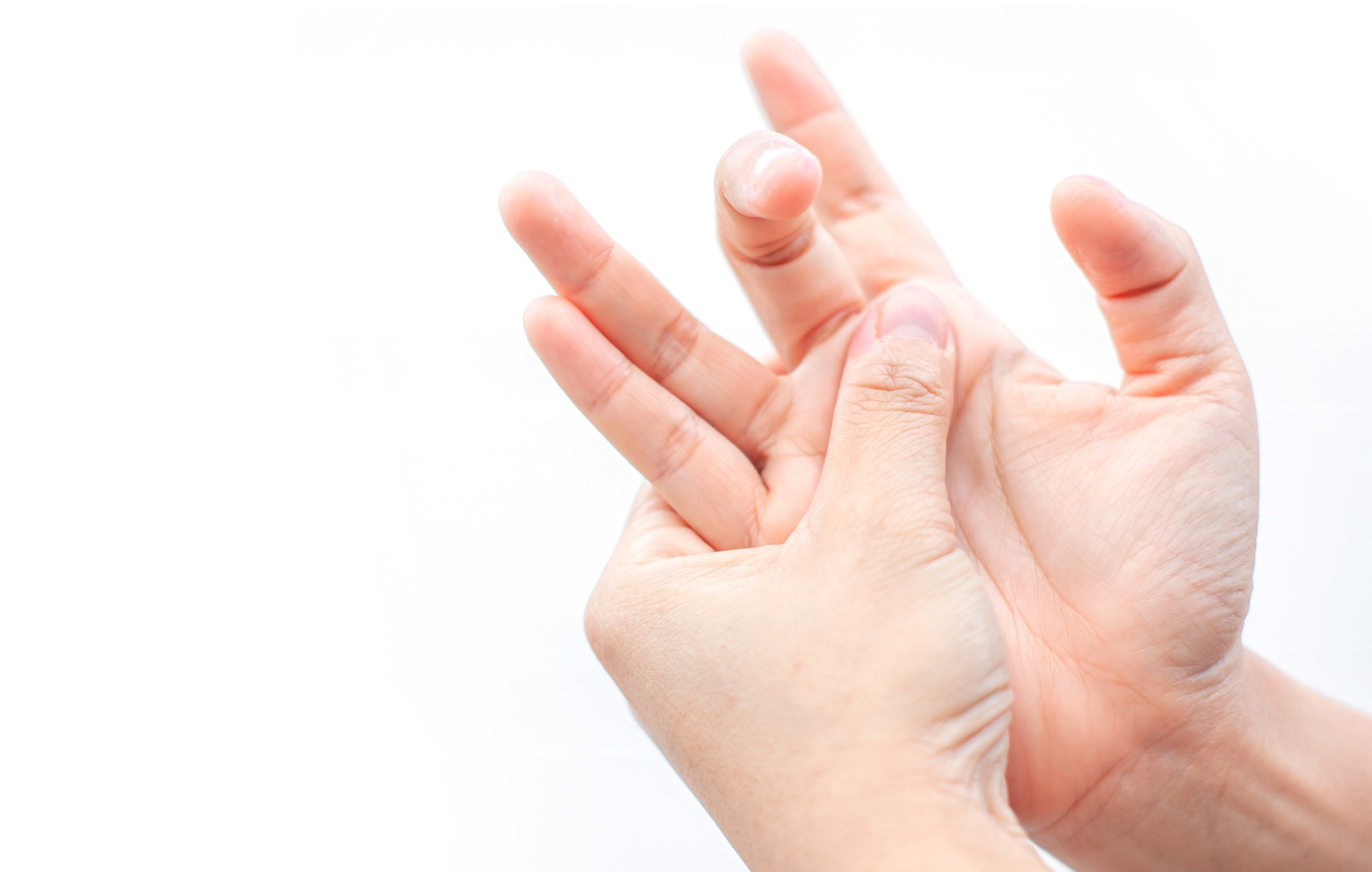Flying fingers
Conservative & prosthetic care
ÜBERSICHT
What is a snapping finger?
Triggerfinger is caused by inflammation of the tendon sheath or the gliding canal. The glide channel runs from the palm to the fingertips. In this channel, the flexor tendons are fixed to the fingers with the so-called ring ligaments so that they do not sag when tensed, but can build up their optimum strength.
The gliding tissue surrounding the tendons – or the tendon itself – can become inflamed and subsequently thicken as a result of overloading. The thickening creates a constriction in the narrow canal, which sometimes has to be overcome with considerable effort. The finger is then bent normally until it is tight and then gets stuck in the movement. Only with additional effort – active or passive – can the tightness be overcome and the finger snaps into full extension.

How do I recognize a snapping finger?
In the early stages, all you feel is a painful pulling sensation. In the further course, the non-friction-free, bumpy movement is very typical. The snapping of the finger into extension shows the full picture of the fast finger.
How is a snapping finger treated?
The aim of conservative treatment is to eliminate the inflammatory changes in the tendon gliding tissue. This can be done by applying an anti-inflammatory ointment locally , by taking medication or by injecting cortisone.
If conservative therapy does not lead to the desired success, the only remaining option is surgery.
Wie wird ein Schnellender Finger operiert?
The procedure can usually be performed under local anesthesia. The inflammatory tissue is removed through an approx. 1.5 cm incision in the palm and the annular ligament, through which the thickened tendon wants to slide, is split. During the operation, the patient can already move the finger normally again without getting stuck.
